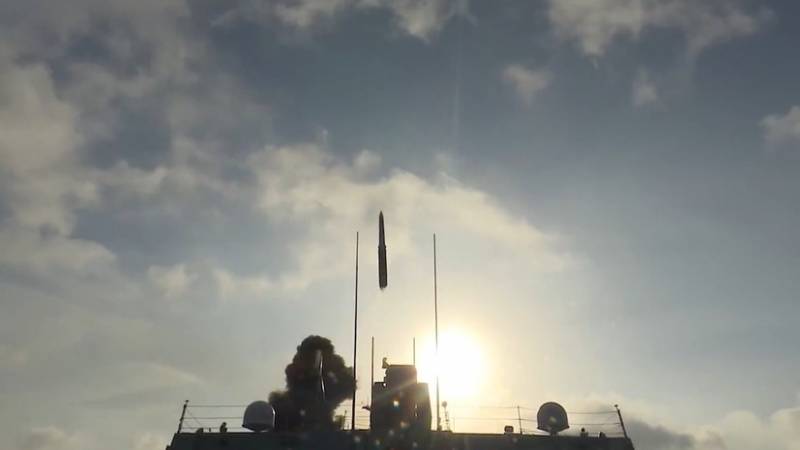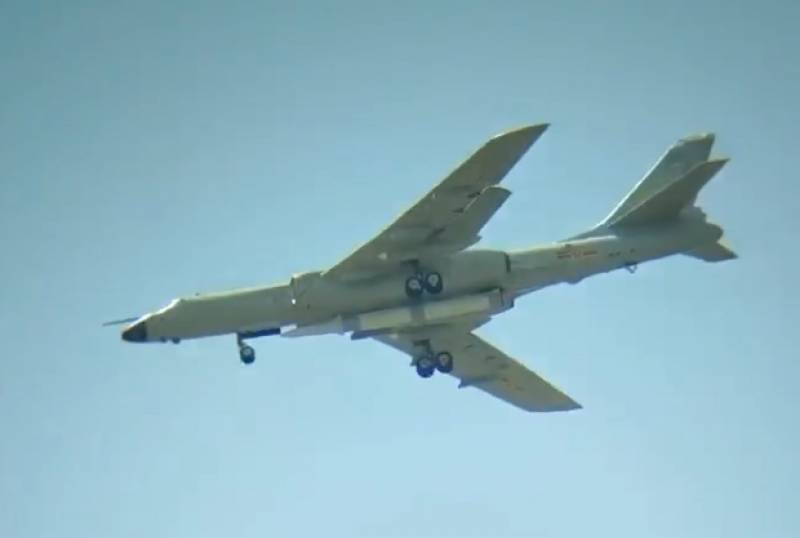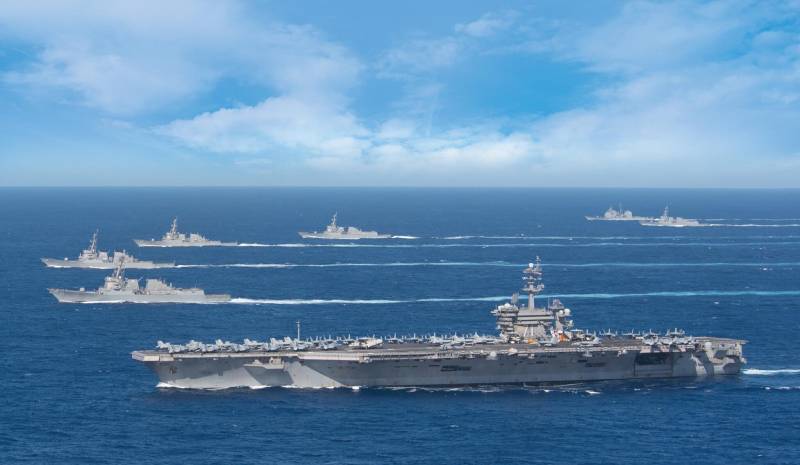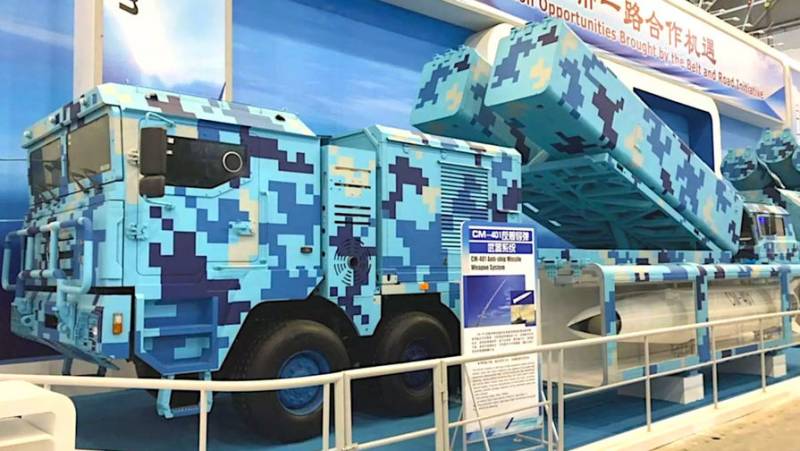Who is threatened by China's hypersonic missiles?
April 20, 2022 was an epochal day. On this day, China officially released footage of the launch of the latest anti-ship missiles YJ-21, aka Yingzi-21, aka Eagle Strike-21, that is, Eagle Strike.
To whom this strike is intended, one can not build deep hypotheses, everything is clear as daylight. And it is understandable who needs to strain military analysts in an attempt to decide how effective the new Chinese weapon.
Given the PLA's admirable level of secrecy, there is very little information about the missiles. However, there are some things, and perhaps we can draw some conclusions about how much new weapons will take China to a new level.
Several months have passed since the appearance of the first footage of successful launches of new missiles and a certain amount of information. During this time, the Chinese media pleased us with footage of the deployment of the YJ-21 on their H-6N strategic missile carrier and, in June, the launch from the Project 055 destroyer, which the whole world actually considers a missile cruiser.
It is clear that new launches are, to a certain extent, a hint against the backdrop of the unfolding Taiwan crisis. And it is addressed primarily to the United States, whose help Taiwan is counting on.
And here, as they say, there is more room for a strategic game.
The game today is to create hypersonic missiles. Ballistic, quasi-ballistic, aeroballistic or anti-ship is not so important. It is important at this point that modern air defense systems are practically incapable of intercepting and destroying a missile flying at hypersonic speed and eliminating the threat posed by this weapon.
Russia made the first move. And it was very original, in the course of a special operation in Ukraine, attacks were carried out on objects that were available for study by Western experts. Very wise. Our "potential" had something to think about, and on the basis of which to draw the appropriate conclusions. At least now the existence of the "Dagger" no one questions.
China is doing much the same, but without combat demonstrations, so the experts have to puzzle over what the YJ-21 really is.
I support the opinion of those who believe that the YJ-21 is a two-stage ballistic missile with a hypersonic glider warhead. The range of the missile can be estimated up to 1500 km.
Therefore, launches from Project 055 destroyers, which are the main strike force among surface ships and on the suspension of H-6N missile carriers, are completely unsurprising. The first really very powerful ships, which are the strike force of the Chinese naval fleet, planes - also absolutely not surprising.
Unlike the Russian 9S7660 hypersonic missile of the Kinzhal hypersonic missile system, the Chinese YJ-21 has a much longer range. This is primarily due to the second stage, which the Russian missile does not have. Its role is played by the carrier, the MiG-31K, which is capable of accelerating far beyond the speed of sound and thereby providing the rocket with initial acceleration. However, this significantly increases the weight of the rocket and the use of an aircraft similar to the Russian MiG-31 is out of the question. Moreover, China does not have such an aircraft. That is why the H-6N is involved, which is a Chinese copy of the Soviet Tu-16. Not to say that this is a modern aircraft, but it is suitable for such a role. However, the Chinese do not have much choice, so the Tu-16, modernized to the last word, is suitable for such tasks.
The sea launch of the "Eagle Strike" was timed by the Chinese to coincide with the celebration of the 73rd anniversary of the formation of their navy. Here, traditions are observed, and the hint is definite, although neither the Ministry of Defense of the PRC, nor other government officials have yet made any official statements on this topic.
That is, we launched it, and you can figure it out for yourself…
Accordingly, in fact, China has demonstrated that it has a hypersonic triad. Project 055 destroyer, H-6N missile carrier, and there is probably something on the ground. It cannot but be, since China has a complete order with a chassis capable of moving missiles of this weight. They are available both on the basis of MAZ and on the basis of Mercedes.
So the message is clear: China has ground, air and sea-based hypersonic missiles. The only thing that has not happened yet is the launch of such a missile from a submarine, but the submarine fleet is not the strength of the Chinese fleet, therefore, if this happens, then a little later.
But what is there is more than enough to make all the parties involved in the Taiwan crisis think.
What can be said about the rocket itself. On the one hand - a little, on the other - quite enough. Since there was no data on the YJ-21 in the public domain, we will start from the fact that there are a lot of Russian ones in the design of the rocket, because the ancestors were the same: Soviet developments based on ballistic missiles. This is how the Iskander was created, this is how the Dagger was created.
Considering that the PRC at one time received a lot of technology from the Soviet Union, it is quite understandable that Chinese engineers and designers went the same way. However, given the somewhat different strategies, the Chinese have focused on sea-based and aviation long-range carrier, since it is obvious that all potential targets for hypersonic weapons will be located in the Pacific Ocean at a considerable distance.
That is, American groups of ships heading in the direction of the PRC.
The sea launch footage shows that the YJ-21 is a two-stage cold-launch missile. It can also be concluded from the video, watching the opening of the control planes, that they are much smaller than those of any cruise missile and are comparable to similar parts of the Iskander.
It is from this that many experts have concluded that the YJ-21 is a ballistic missile with a hypersonic unit. The aerodynamic planes on these missiles at existing speeds do not play the same role as those of cruise missiles. This is due to significantly higher speeds, at which small planes and gas-dynamic rudders are quite sufficient for maneuvering. This again, referring to our Iskander.
References to the Iskander are fine, but China has gone its own way to the YJ-21. And the main milestone on this path was the CM-401 rocket.
This is an anti-ship version of the BP-12A export tactical missile from China Aerospace Science & Industry Corporation Limited (CASIC).
The SM-401 was declared to have a range of 15 to 290 km, but not everything is beautiful here. Slyness in certain cases is everything for the Chinese side. In our case, these statements were to make the missile conform to the boundaries of the missile technology control regime. However, the highlight here is that China did not sign the documents and was not a member of the MTCR. In 2004, China applied to join the MTCR, promising to abide by all rules, but members did not offer membership to China due to concerns about China's export control standards. And therefore, in fact, the real range of Chinese missiles could be even more. In any case, no one from Western experts checked, all conclusions were made, let's say, on the basis of their own observations.
And the SM-401 could fly over a distance of up to 300 km at a speed of up to 6M. It was possible to launch them from a coastal-based complex just on an 8x8 automobile chassis.
But SM-401 is 2018, and we have 2022 in the yard. And it is obvious that the work was done very, very worthy.
Whoever followed the Chinese developments the most and most closely was, of course, the United States. It is the Americans who are well aware of how the Chinese will respond to the exit of the AUG towards the borders of the PRC or zones of influence such as artificial islands.
Meanwhile, back in March 2022, a report was made in the US Congress on Chinese tests of ballistic missiles, which were created specifically to deliver hypersonic warheads to targets. It was about the DF-17, medium-range ballistic missiles, equipped with precisely such planning hypersonic warheads.
The report included a figure for the possible range of effective action - 2 km. But even if the Americans made a little mistake in their calculations, and the real range is somewhat less, about 500 km, this is still a very, very decent range.
Let's face it, such missiles can strike from their own waters, air borders, and even from the ground against ships that will only be on the way to the same Okinawa. We are simply culturally silent about any of the 32 American bases on Okinawa, because at the time the missiles are launched, the fate of the military personnel at these bases will be decided.
Today, the United States does not yet have mobile systems that are capable of intercepting and destroying hypersonic gliders, because all these demonstrations by China are primarily addressed to the Americans.
It is clear that in the probabilistic dispute between China and the United States, the entire emphasis will be placed on naval formations as a means of delivering force to the region. And here the United States, which until now had some advantage due to the number of attack ships and strike aircraft on these ships, can be put in a situation where the PLA of the PRC will strike at American ships from a relatively safe distance, which will simply turn out to be defenseless against hypersonic missiles.
Yes, and in Taiwan, too, it is worth considering whether the Patriot air defense system can be considered a panacea for all ills. It is very doubtful that it is possible.
The AUGs of the US Navy will also be equally vulnerable, and if the airborne and surface shipborne carriers of these weapons can still be tracked somehow, then in the case of placing such missiles on ground-based complexes and on submarines, which the Chinese side has not yet said out loud (although the Chinese side generally prefers to remain silent), will significantly increase the power of the PLA in the confrontation with the US Navy.
And in terms of response, the United States is also still lagging behind Russia and China. The development of such types of weapons is very slow, and I would say - uncertainly. To be in the position of a lagging side for the United States is not like death, no. But the Americans will still have to reconsider their tactics in the same Asia-Pacific region in the light of recent events. It is very difficult to dictate one's will in the region to others without being the strongest.





Information